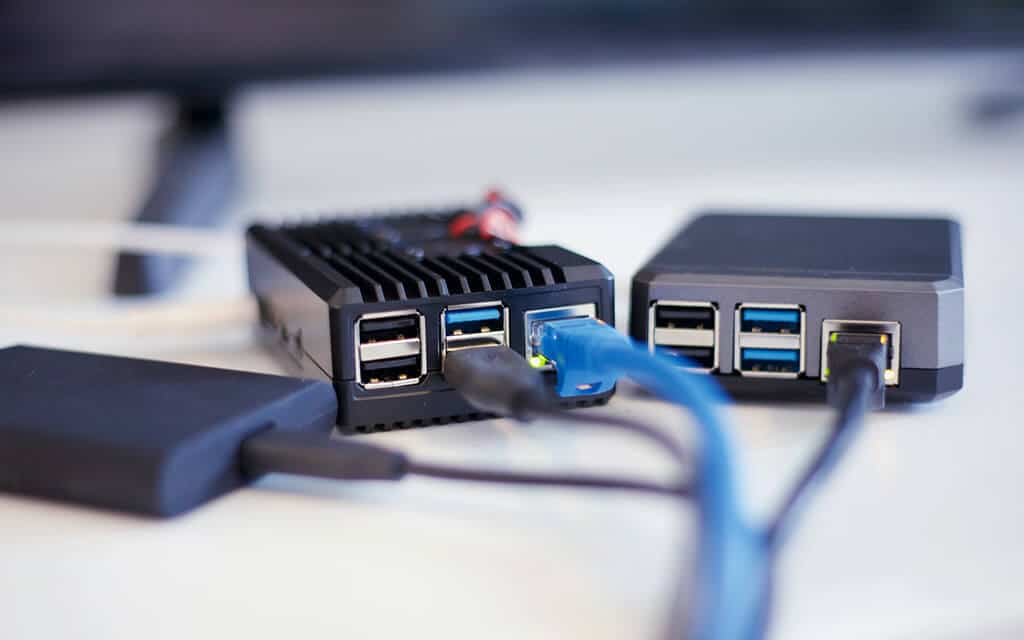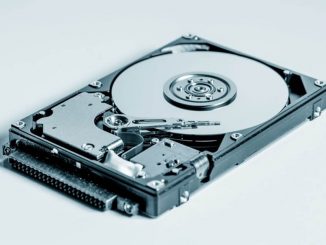In this guide, we will answer the question, “what is a docking station for a laptop?” If you have ever wondered what a laptop docking station is, you will find everything you need to know. We will explain what a laptop docking station is, how it works, why you should use one, and more.
What is a Docking Station?
You have the choice between a laptop and a desktop computer. The major advantage of a laptop is portability. You can carry it around with you and use it wherever you go. With a desktop computer, you will usually have access to more ports and functionality, but you are stuck in one location.
A docking station is a great way to bridge the gap between a laptop and a desktop. You can take your laptop with you when you have to go out, and then when you return to your home or office, you can plug it into your docking station to provide you with similar functions to that of a desktop.

There are various types of docking stations available, and you need to purchase one that provides you with the functionality you are looking for. At the basic level, a docking station will provide you with more ports so that you can connect with more devices than you can by just using your laptop.
The advanced docking stations will provide a lot more functionality, such as connecting to monitors, speakers for a computer, keyboards, external drives, microphones, and other audio devices, and more. You need to determine the level of additional functionality you need for your laptop before buying a docking station for it.
Modern laptops are powerful, but they will always fall short on functionality and ports due to their small form factor. It is easy to add additional ports and functionality to a desktop computer. When you have a docking station for your laptop, you will do a lot more and get a lot closer to doing what is possible with a desktop.
How do Docking Stations Work?
The earliest docking stations were really glorified port extenders. They replicated the number of ports you had available for use when you plugged your laptop into it. So, if you needed more USB ports in the old days, the docking station would provide this. Unfortunately, a lot of the early docking stations were proprietary, meaning you could only use them with specific laptops.
With the introduction of USB 3.0 in 2008, a new generation of docking stations appeared. These were no longer proprietary, and you could plug them into the USB 3.0 port of your laptop. If you wanted to plug in a second monitor, you could do this through the additional HDMI port. Unfortunately, USB 3.0 does not naturally support HDMI signals, so they come with conversion chips.
The main problem with the first USB 3.0 docking stations was that the additional chips required for conversion tended to put a strain on the laptop CPU as more power was required. This resulted in the laptop slowing down.
In 2015, USB-C and Thunderbolt 3 docking stations appeared and much better than the previous versions. In addition, there were no additional conversion chips and software required as HDMI video signals, charging, and data transfer were all supported natively through a single port.
Many modern docking stations come with their own power supply, so there is no power drain on the laptop itself. In addition, there is no requirement to use CPU resources to power chips and software, so they are much more efficient.
Why should you use a Docking Station?
One of the primary reasons for using a docking station with your laptop is to attach it to multiple devices at once. Unfortunately, most laptops have a limited number of USB ports, so if you want to use a printer, a wireless mouse, a wireless keyboard, and a scanner, there are few ports available.
This means that without a docking station, you will need to unplug one device to use another device as you don’t have enough ports to use them simultaneously. Therefore, it is far more convenient to plug your laptop into a docking station and have everything ready for you to use.
Prices pulled from the Amazon Product Advertising API on:
Product prices and availability are accurate as of the date/time indicated and are subject to change. Any price and availability information displayed on [relevant Amazon Site(s), as applicable] at the time of purchase will apply to the purchase of this product.
When you are on the move, the functionality and ports of your laptop are usually sufficient for your needs. But when you are at your office or home, you will probably want to connect more devices to be more productive. A docking station is an ideal solution for this.
Some devices are not designed for use with a standard laptop, and when you have a docking station, you can access these “new devices”. Be sure that the docking station you purchase is compatible with any new device you want to connect to before buying it.
If you are thinking about purchasing a desktop computer as well as owning a laptop, then a docking station can save you money. You may feel that a desktop is the only solution when you have multiple devices that you want to connect to. But modern docking stations can do more than you might think, and most of them are cheaper than buying a desktop computer.
Think about a docking station as a way to expand the capabilities of your laptop so that it will perform like a desktop. It is simply a matter of plugging your docking station into your laptop and then being able to do what you want.
USB-C vs. Thunderbolt 3 Docking Stations
The main difference between a USB-C and a Thunderbolt 3 docking station is bandwidth. With USB-C, you get up to 10 Gb per second, whereas a Thunderbolt 3 delivers up to 40 Gb per second. Given the significant difference in bandwidth, why would you want to go for a USB-C docking station?
Unfortunately, it is not as simple as that. First, your laptop needs to be equipped with a Thunderbolt 3 port to use a Thunderbolt 3 docking station. The Thunderbolt 3 port looks identical to the USB-C port but has additional components that provide additional bandwidth.
If your laptop has a Thunderbolt 3 port, then you can use both types of docking stations. With just a USB-C port, you can only use a USB-C docking station. A Thunderbolt 3 port has a bolt of lightning symbol next to it, making it easy to distinguish from USB-C.
Conclusion
Suppose you want the convenience of portability and the flexibility of more ports and connect to different devices. In that case, a laptop and a docking station are the answer. This combination provides you with the additional functionality that a desktop computer can provide and the flexibility to work on the move.




Good read